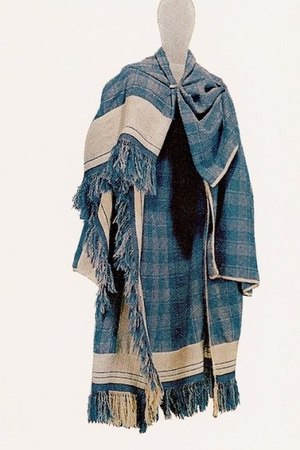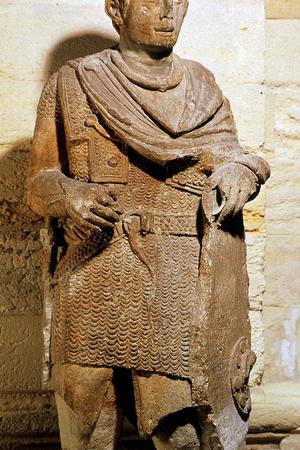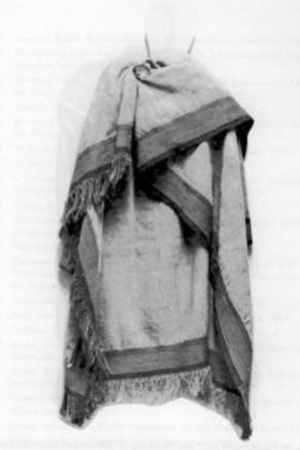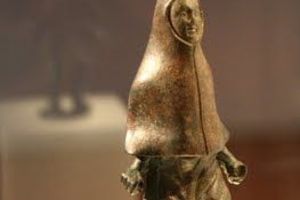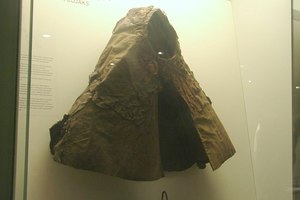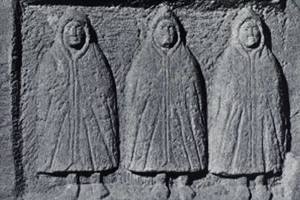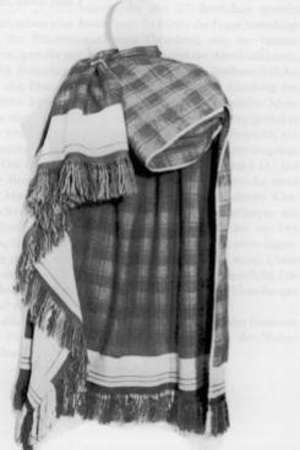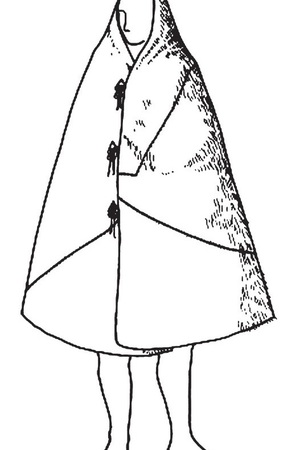Celtic cloaks
Celts, who lived in cool and damp climates, actively used cloaks for protection against rain and cold. The cloaks found by archaeologists were either rectangular pieces of woolen fabric, sometimes adorned with fringe, or outer hooded garments.
Similar clothing items were also used by other peoples, for example, the Roman sagum and paenula.
Rectangular Cloaks
To wear such a cloak, approximately 40-50 cm were folded back from the edge of the shorter side, and the fabric was draped over the right shoulder and fastened with a fibula. The resulting small fold could be used as a hood.
In modern museum reconstructions, you often see a ribbon or fringe sewn onto the exhibit. It should be noted that in archaeological findings of cloaks, both the fringe and the ribbon were part of the cloak's fabric. It is likely that before weaving, the threads were twisted to create a reinforced edge, or the edge was braided on small boards, of which there could easily be hundreds.
Let's consider, for example, a cloak found in Thorsberg. It is a simple rectangular piece of wool measuring 168 cm by 236 cm. Its edge was braided on small boards, using the weft threads of the cloak instead of separate threads, and then the fabric was woven on a loom. As a result, a combined trim was created along with the cloak. A similar cloak was found in Vehnemoor.
Thus, it is not desirable to sew a ready-made trim onto the edge of the cloak for reconstruction. However, the fabric can be left loose at the bottom for decoration and made into fringe.
Cucullus
This is what the ancient Germans called a hooded cloak. Archaeological findings such as figurines, reliefs, and actual clothing items tell us that the cucullus could be long and resemble a cloak with a pointed hood, or it could be a separate cape with an elongated hood adorned with fringe, worn over a dress.
Related topics
Celts, Fibula, Sagum, Penula, Celtic headwear

 Gallery
Gallery






